|
PLEASE NOTE: Engine 278 and the other rail cars have been temporarily removed from the trestle for restoration purposes. At the mouth of Cimarron Creek, just upstream from where it spills into the Gunnison River, stands a reminder of bygone days in railroading. Locomotive #278, its coal tender, a boxcar, and caboose stand atop the last remaining railroad trestle along the Black Canyon of the Gunnison route. What can now be seen in this exhibit is an excellent example of rolling stock railroad cars used on this branch of the Denver & Rio Grande (D&RG) Narrow Gauge Railroad in its heyday. 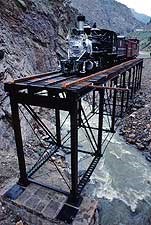
THE TRESTLE
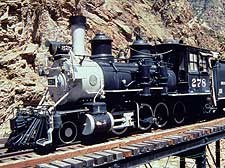
THE ENGINE
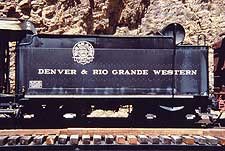
THE EXHIBIT TODAY
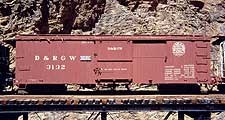
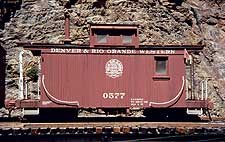
The caboose was built in 1886 and used on this run of the Denver and Rio Grande Narrow Gauge Railroad.
The locomotive and the other cars have been restored to look as they would have in 1940. Locomotive #278 was retired by the D&RG in 1952, and given to the city of Montrose as a gift. In 1973, it was leased (along with the tender and caboose) to the National Park Service for 20 years. In 1974 they were loaded aboard a Bureau of Reclamation "lowboy" for the move from Montrose to Cimarron Canyon. At that time, the western end of the trestle was still covered with earth from fill over a culvert, and it was possible for the "lowboy" to back up to that end and the locomotive and cars to be moved directly onto the trestle. In 1976, the trestle was placed on the National Register of Historic Places, due to its significance as the last remaining structure representing the history of the narrow gauge railroad in the Black Canyon of the Gunnison. The lease of the locomotive, tender, and caboose was renegotiated in 1989 and extended to 99 years. Today, the Cimarron Canyon railroad exhibit display can aid our understanding and appreciation of the accomplishments of the trains which ran the Black Canyon of the Gunnison route of the narrow gauge railroad. |
Last updated: February 24, 2015
